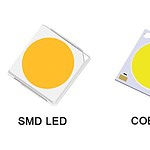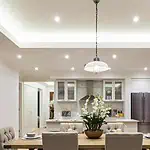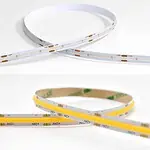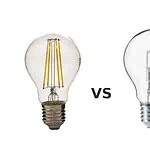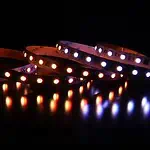Proper lighting sets the mood of your living spaces, making them look lively and elegant. Choosing energy-efficient and bright lighting for your home or office are very important. But with a wide variety of light bulbs available, it can also be a daunting task.
The introduction of LED and OLED technology makes choosing lights much easier. They are well-equipped to meet all your lighting requirements. You can opt for the one that best enhances your room design according to your budget and needs. In this article, you will learn about OLED and LED lighting, which can help you choose the right one.
OLED Lights- A Quick Brief
An organic Light Emitting Diode is popularly known as OLED. They emerged as a new alternative to the most popular LCD displays. These lights are a more advanced version of LED lights which were invented in recent years. The illumination produced by OLEDs is very similar to natural lights having a soft look. Like LEDs, solid light bulbs consume less energy to illuminate your rooms. You can purchase them either as light bulbs or in panel form, according to your requirements. However, you can customize the panel lights. Available in many colors, these lights can be tuned to the choice of color you want for the lighting.
Being organic in nature, they use biodegradable carbon-based material to make light panels. They are widely used in the display of smart products and light fixtures. OLEDs produce a wide range of colorful lights which can be tuned and customized. You can use dimmers which allow you to regulate the lighting for each light.
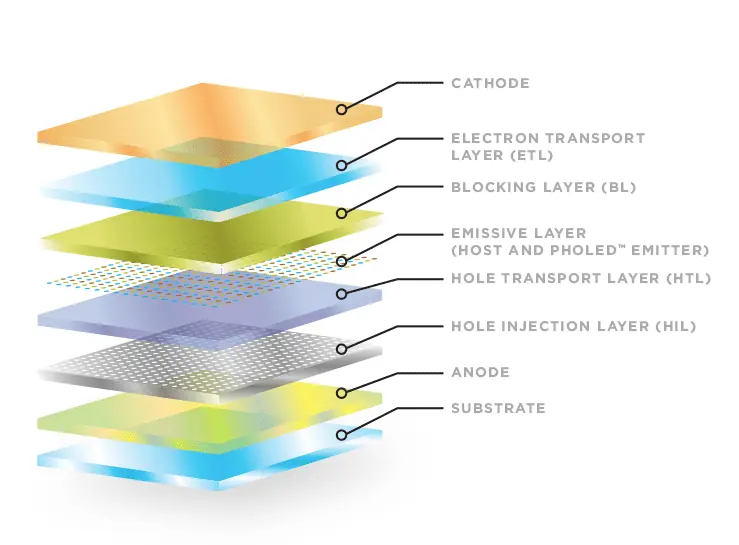
LED Lights- A Quick Brief
LEDs have come a long way from indicator lights in circuit boards to lighting a football stadium. They play a major role in transforming the lighting of your living spaces like never before. They are being used in almost each and everything that you come across in your everyday lives. With the help of light-emitting diodes, the light is emitted in LEDs. The current passes through the diode in the forward direction. LED lights are not really white light. They appear as white light to your eyes when combined with blue, red, or green and are covered in phosphor.
Nowadays, LEDs have become a common and preferable choice of lighting in your home as well as your office. Being available in different sizes and shapes, you can buy them as light bulbs or strips that best suit your use. These light strips have several diodes connected to each other. This helps them provide better illumination over a wide area than normal LED bulbs. LEDs are unidirectional and are designed to provide lighting in a particular direction. However, they do not have a wide area of lightings like halogen and sodium lamps. They can provide illumination over 180 degrees. LED lights are very attractive and entirely customizable to your needs. They are mostly used in the illumination of ceilings, under cabinets, or reading lamps.
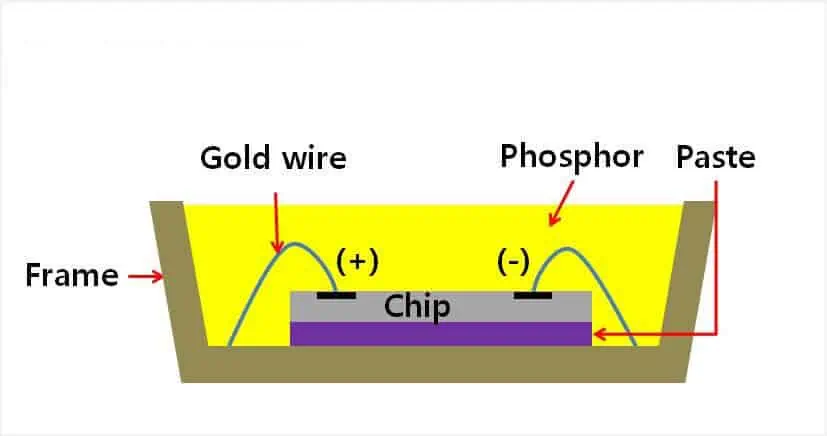
Pros & Cons Of OLED Lighting
First, let’s discuss the various advantages that OLED lighting offers. You will also see certain OLED limitations towards this section’s end.
Advantages
Customized to any shape or size
The panel in which lights are embedded is very flexible, which allows you to bend it into any shape you like. These thin sheets can be made into varying sizes, from small to very large. Due to their high versatility, they can be used in any light fixture in your home or office. These OLED panels mostly don’t need diffusers or reflectors to be used in them. They produce light on their own when current passes through them. This helps in manufacturing OLED lights in various designs for illumination.
More Environmentally Friendly
As they are organic, OLED lights are much more environmentally friendly than LEDs. The components of OLED panels are made of carbon-based, biodegradable material. These organic lights can be easily disposed of in soil or recycled when damaged. OLEDs can be manufactured using glass, plastic, and metal layers. They are completely safe. So you need not worry about the harmful elements inside them, unlike other light bulbs.
Lasts Longer
OLED lights have a long life span of up to 40,000 operating hours. Although they are not as durable as LEDs, they still serve as a better lighting option for your homes. It is still a much better choice when compared to traditional light bulbs. As this technology advances, there is hope for more energy-efficient and durable OLEDs.
High Brightness Levels
With thin sheets, OLED displays can have multiple layers of OLED lights embedded in them. These layers help them to emit high-intensity bright light, which is many times greater than LEDs. Along with superior viewing angle, you feel better picture quality in OLED displays. Be it smartphones or Televisions; they provide high contrast levels. Due to this, they make deep black levels and appear more contrasting to your eyes.
Disadvantages
More Expensive
OLEDs are very expensive as they use “organic” materials to manufacture these lights. They use frit glass inside the light bulb, which makes it very costly. OLED displays in smart products are much more expensive than normal LED displays. But in terms of the quality of light produced in the display or fixtures, it is worth the price. But it is worth the extra expense if you prefer more quality lighting than LEDs.
Not Easily Available
OLED lights are particularly used in certain applications like displays and light fixtures. You can also find them in chandeliers and other fixtures customized to your needs. The frit glass used in cavities is expensive and hard to manufacture. For this reason, they are not readily available in the market today.
Shorter Lifetime
Most OLEDs have a shorter lifetime when compared to other displays available today. Its life span decreases when it comes in contact with water or even moisture. Just a little moisture in the panel can cause damage to the OLED displays of the device you’re using. Like water, they are equally prone to damage under excessive heat or sunlight.
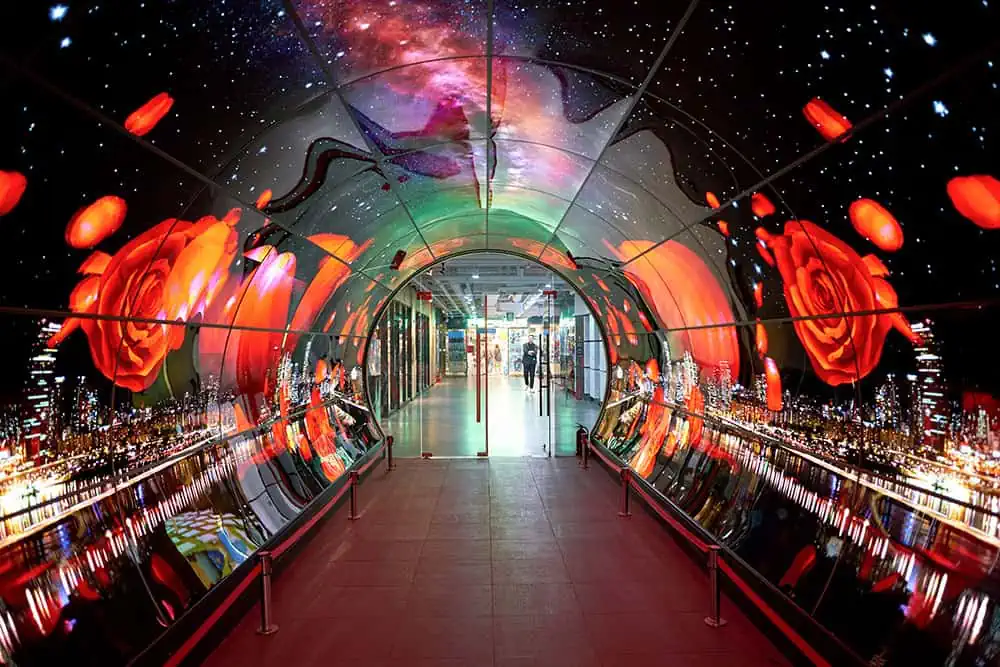
Pros & Cons Of LED Lights
Let’s have a quick look at this section which details some pros and cons of LEDs.
Advantages
High energy efficiency
LEDs are highly energy efficient, having 90-100 lumens per wattage. Even if you leave the light source on for hours, the light’s intensity remains the same, emitting less heat. As it provides very little heat, you don’t have to worry about burning your fingers when you come in contact with it.
Directionality
If you want to light up the spot, place it in a particular direction where you need bright lighting. As they are unidirectional, all the light will be focused in a single direction. So no light is wasted, unlike other incandescent and halogen lights.
Long Lifespan
LEDs have an operating lifespan from 50,000 hours to 100,000 hours in ideal cases. Hence, LEDs are much more durable than any other form of lighting. They stay intact and consistent for many years without the need for any maintenance at all. You will only have to replace your LED light bulbs once in many years.
Operate In All Temperatures
LEDs are designed to withstand any weather conditions by varying temperatures. Even when the temperatures drop, these lights can produce high-intensity illumination. Due to this, LEDs are used in cold storage, freezers, and even in street lights. They can instantly turn on and off without any delay, even in cold conditions.
Disadvantages
Decrease in Brightness Level
Towards the end of their lifespan; some LED lights tend to produce less bright light than usual. However, these slight changes are unnoticeable unless you keep track of their brightness. There’s nothing to worry about, as it is a common drawback that appears in mostly all kinds of lights. This shift in color occurs mainly due to the phosphor coating being burned off.
High Upfront Cost
According to the lumens produced, the price range of LEDs increases. If you want high-intensity lighting, you have to get an expensive LED light to serve your purpose. Despite their high upfront cost, they are worth every penny of your extra expense due to their long life. Once you start using these lights, you will never feel like shifting to another lighting.
Temperature Dependency
Although they can sustain varying temperatures, LEDs are likely to fail in extreme heat. When exposed to extreme temperatures for a long time, its durability reduces. Their performance depends on the ambient temperature in which the light functions. In case of high outdoor temperatures, LEDs cannot withstand a lot of heat without a lamp shield. Its efficiency may decrease, resulting in early light failure than its normal lifespan.
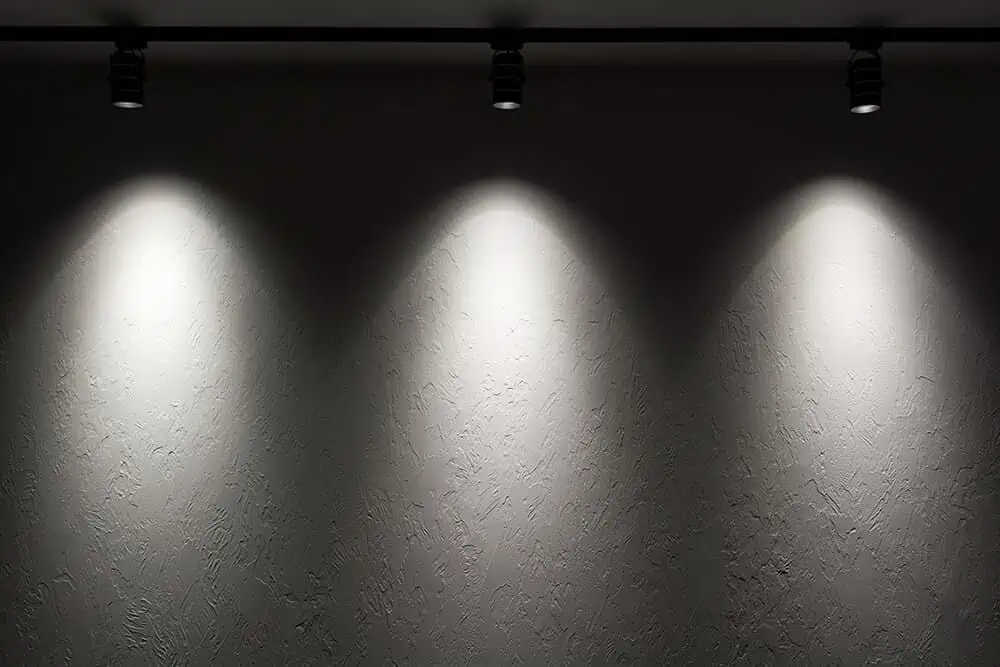
Comparison Table- OLED Vs. LED
The table below compares both types of lighting on different bases.
| Comparison Basis | OLED | LED |
| Cost | OLEDs are comparatively expensive and not affordable to all. | LED lights are not as expensive as OLEDs. They are available at varying prices according to their output. |
| Flexibility | OLEDs are flexible, but they are not as flexible as LEDs. | LEDs are highly flexible. |
| Life Span | OLEDs have a comparatively less life span of up to 40,000 hours. | They are durable and have a much longer lifespan of up to 100,000 hours. |
| Picture Quality | They provide better picture quality than normal LED display technology. | The picture quality in LED displays is not as high as in OLED displays. |
| Brightness | OLED lights provide less bright light than LEDs. | The intensity of light produced in LEDs is higher than in OLEDs. |
| Efficiency | OLEDs are slightly less efficient when compared to LEDs. | LEDs have higher efficiency of 90-100 lumen per wattage. |
| Response Time | They have a much faster response time that instantly turns on and off. | The response time in LED lights is not as fast in OLEDs. |
| Viewing Angle | OLEDs have a superior viewing angle of 84 degrees. | In LEDs, the viewing angle is 54 degrees which is not as wide as in OLEDs. |
| Weight | OLED lights weigh comparatively less than LED lights. | They are much heavier in terms of weight. |
| Size | OLEDs are comparatively smaller in size when compared to LED lights. | LEDs are available in various sizes, from very small to larger sizes. |
| Screen Thickness | They have thinner screens than LED displays. | They have thin screen thickness but not as thin as OLED displays. |
| Ultraviolet Rays | OLED lights never emit ultraviolet rays during illumination. | LEDs emit a very small amount of ultraviolet rays during illumination. |
Differences Between OLED & LED
Although OLED and LED sound similar, they still share some differences in their uses. Here are some of the differences between OLED and LED lighting.
- The main difference between these two is in their abbreviation. OLEDs are organic light-emitting diodes, while LEDs are simply light-emitting diodes. LEDs do not contain organic compounds like OLED lights.
- With multiple layers of lights, OLED displays provide bright lighting over an area. In contrast, LED lights are point lighting which is not as soft as OLED lights. They can only produce the same bright lighting in a specific direction or spot.
- OLEDs are not as versatile as LEDs. They cannot be made into various sizes and shapes due to some limitations in design. On the other hand, LEDs have high versatility allowing them to shape into different sizes.
- When it comes to flexibility, OLEDs are more flexible as the thin sheets can be bent in any way you want. In LEDs, it is not possible due to their rigid nature.
- LEDs have a phosphor covering, which helps in producing white light. On the contrary, OLEDs emit naturally white light even without phosphor coating.
Working Principle Of OLED & LED
Let’s take a look at how each type of lighting works.
How Do OLEDs Work?
OLEDs contain thin layers of semiconductor material called organic compounds. This thin layer is placed in between two conducting elements. Thus, these two conductive layers act as anode and cathode. The whole panel is illuminated as current flows when energizing these semiconductive sheets. They follow the principle of self-illumination to provide lighting. OLEDs produce natural white light without a phosphor covering, unlike LEDs.
However, OLEDs are entirely different from LEDs. They differ in terms of what they are made of and their manufacturing process. They are made of organic compounds having carbon-hydrogen bonds. So when current passes, the molecules present in them emit light.
How Do LEDs Work?
The Light Emitting Diodes or LEDs basically works on the principle of electroluminescence. They are composed of semiconductor devices. The diode emits light when electricity passes through the p-n junction diode. With the application of current, the diode allows the current to pass only in a single direction. It is because they have low resistance in one direction and high resistance in the other. As the current is applied, the electrons on one side of the p-n junction diode move to the other side. This continuous movement of electrons emits light from the LEDs.
Real-Life Applications Of OLEDs & LEDs
In this section, you will see the different applications of OLED and LED lights in detail.
Where Are OLEDs Used In Real Life?
- OLEDs are currently used in the display panel of expensive Television sets. Unlike LEDs, they don’t require backlighting for illumination. Each pixel in the OLED display panel illuminates itself. This is why you see OLED displays as more vibrant and bright with better picture quality.
- Another common application where OLEDs are used is in light panels. They produce soft light which illuminates a wide area of space. This makes them a perfect choice of illumination in whatever light fixtures. You can also customize or tune its color as you want.
- OLEDs are widely preferred in wearable devices like fitness bands and smartwatches. It is used so due to its better sunlight readability and thinner form factor. In OLEDs, you can see a much deeper black, unlike other technologies.
- Most of the expensive smartphones available today use AMOLEDs(Active-Matrix OLEDs) in the display. The AMOLEDs produce vivid and more saturated displays than normal LCD panels.
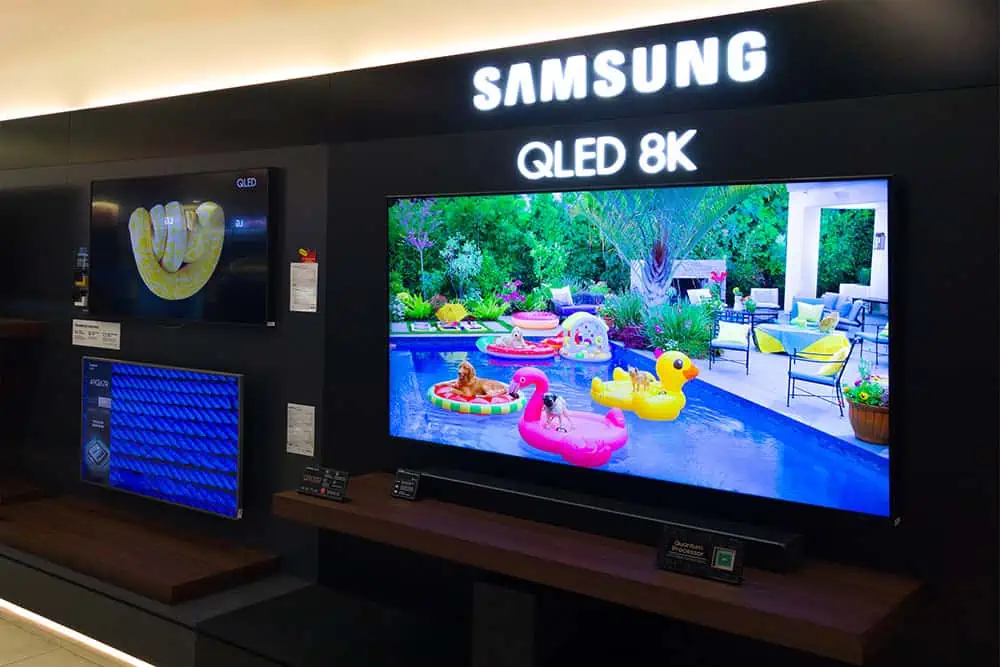
Where Are LEDs Used In Real Life?
- LEDs are widely used in domestic lighting. They provide better illumination in the direction they are mounted. Their flexible design has made them adapt to whatever lighting facility you want. You can use dimmers to control the intensity of illumination needed in the rooms.
- Due to its less power consumption, LEDs are used in smartphones and TV display boards. They also can dim certain display areas, which is very useful in signboards.
- LEDs have become a massive hit in the automotive industry because of their compact size. They are equipped to produce better illumination, even being smaller in size.
- With less heat emission and a prolonged life span, LEDs are mainly used in outdoor lighting. They are a major lighting source in street lights and public areas working perfectly. Despite the temperature, they continue to produce bright lighting in all weather.
- Since LEDs can provide many colors, it is now widely used in toys. With its color-changing capability, it can easily catch your kids’ attention. As a battery can power them, it is easy to move around.
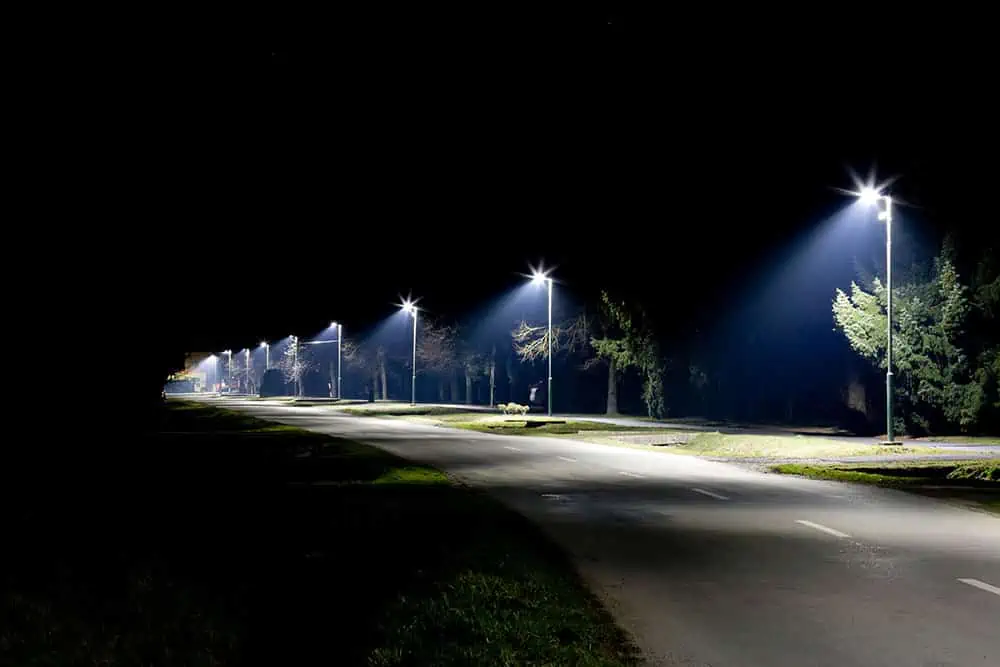
Which One Has A Better Future?
Lighting technology is constantly evolving, making new advancements one after the other. You can hardly predict which lighting will become efficient in the coming future. As people are now promoting sustainable development, only eco-friendly lights will opt. In that case, both OLEDs and LEDs are more eco-friendly than most of the bulbs available today. They are environmentally safe and don’t contain any toxic elements inside them. Although they both are environmentally friendly, OLEDs are biodegradable and easily recyclable.
When LEDs were introduced, they were seen as highly expensive lights. It is only recently that these lights tend to be known for their high efficiency than their pricing. Now it is the same with the case of OLEDs. People see them as expensive lighting options when they have many cheap lights. In the way LEDs have become affordable to many people, someday, OLEDs may also become less expensive. Currently, OLEDs are considered costly because they are made of frit glass in its cavity. If a cost-effective replacement is to be found, it will be a more affordable and better choice, like LEDs.
FAQs
No. In terms of efficiency, LEDs are the most highly efficient lighting source. Currently, no other technologies have been invented to beat their efficiency rate. Although OLEDs provide better quality lighting, they are slightly less efficient than LEDs. Whether longevity or maintenance; there is no other lighting option better than LEDs.
Absolutely. You can easily install dimmers on your existing OLED lights. In most OLED light fixtures, you can use dimmers for LEDs to control the lighting. You should consult your electrician to check if the dimmer is suitable for your light fixture. So, make sure you buy them after proper consultation with an expert.
Both LED and OLED lightings are viable options for illuminating your rooms. You have to consider many factors like energy saving, affordability, and long-lasting. Choose the lights according to how you want your lighting to be. However, LEDs lights fit all these requirements, and homeowners widely use them. But, if you’re looking for quality illumination of your spaces, go for OLEDs.
Conclusion
OLEDs have indeed made quite an entrance with their advanced technology. They gained much popularity with their better picture quality in the television industry. But when it comes to the lighting industry, it hasn’t made any progress yet. Despite their efficient lighting, OLEDs didn’t turn out to be a replacement for LEDs.
Being an efficient light, LEDs continue to be the popular choice of lighting. Due to their high price and unavailability, the demand for OLED lights has reduced in the market. Now, people see LEDs as the best budget-friendly and efficient form of lighting today. It’s up to you which form of lighting to adopt for your home, office, or anywhere.
LEDYi manufactures high-quality LED strips and LED neon flex. All of our products go through high-tech laboratories to ensure the utmost quality. Besides, we offer customizable options on our LED strips and neon flex. So, for premium LED strip and LED neon flex, contact LEDYi ASAP!
